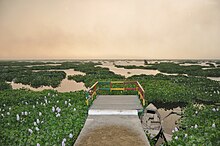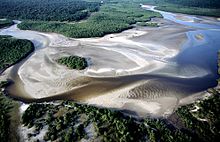
Back مواقع رامسار Arabic Situs Ramsar BAN রামসার স্থান Bengali/Bangla Lloc Ramsar Catalan Ramsarområde Danish Ramsar-loko EO Sitio Ramsar Spanish سایت رامسر FA Ramsarin sopimuksen vesiperäiset alueet Finnish Site Ramsar French




A Ramsar site is a wetland site designated to be of international importance under the Ramsar Convention,[1] also known as "The Convention on Wetlands", an international environmental treaty signed on 2 February 1971 in Ramsar, Iran, under the auspices of UNESCO. It came into force on 21 December 1975, when it was ratified by a sufficient number of nations. It provides for national action and international cooperation regarding the conservation of wetlands, and wise sustainable use of their resources.[1] Ramsar treaty participants meet regularly to identify and agree to protect "Wetlands of International Importance", especially those providing waterfowl habitat.
As of October 2024[update], there are 2,521 Ramsar sites around the world, protecting 257,317,367 hectares (635,845,060 acres), and 172 national governments are participating.[1]
- ^ a b c Ramsar.org homepage. Accessed 03.10.2016.